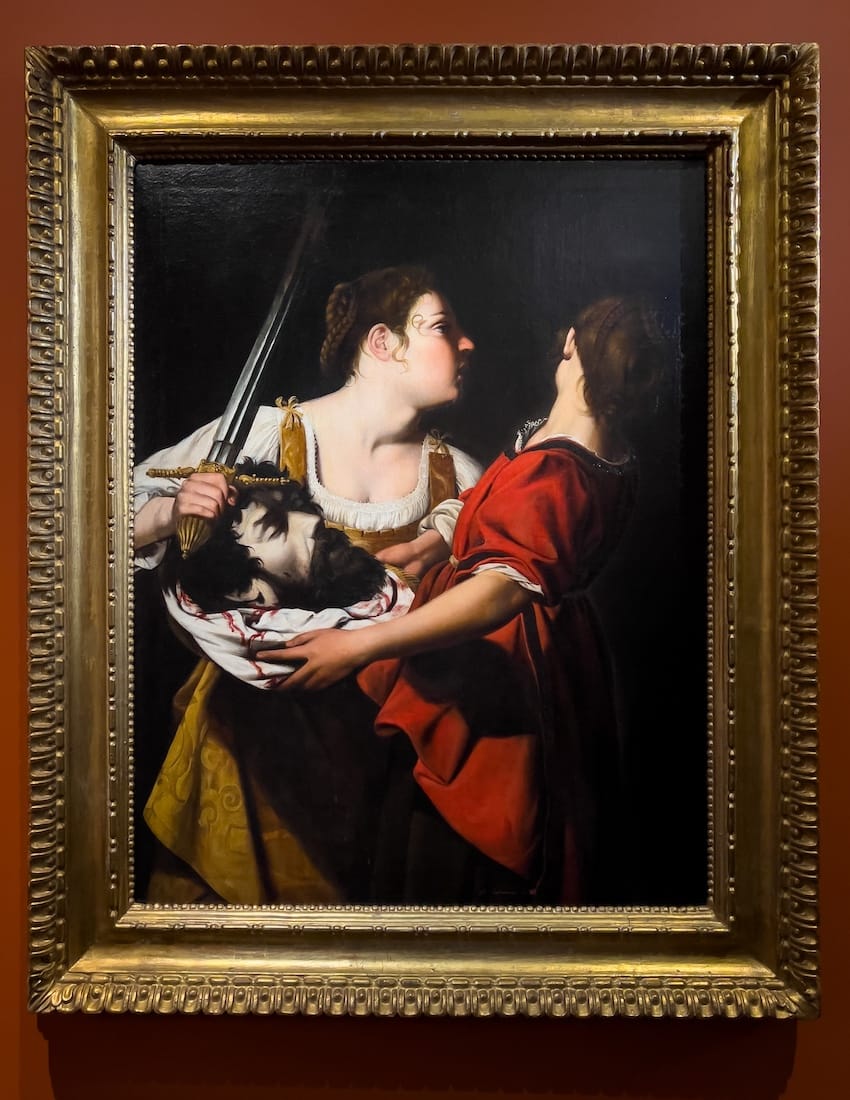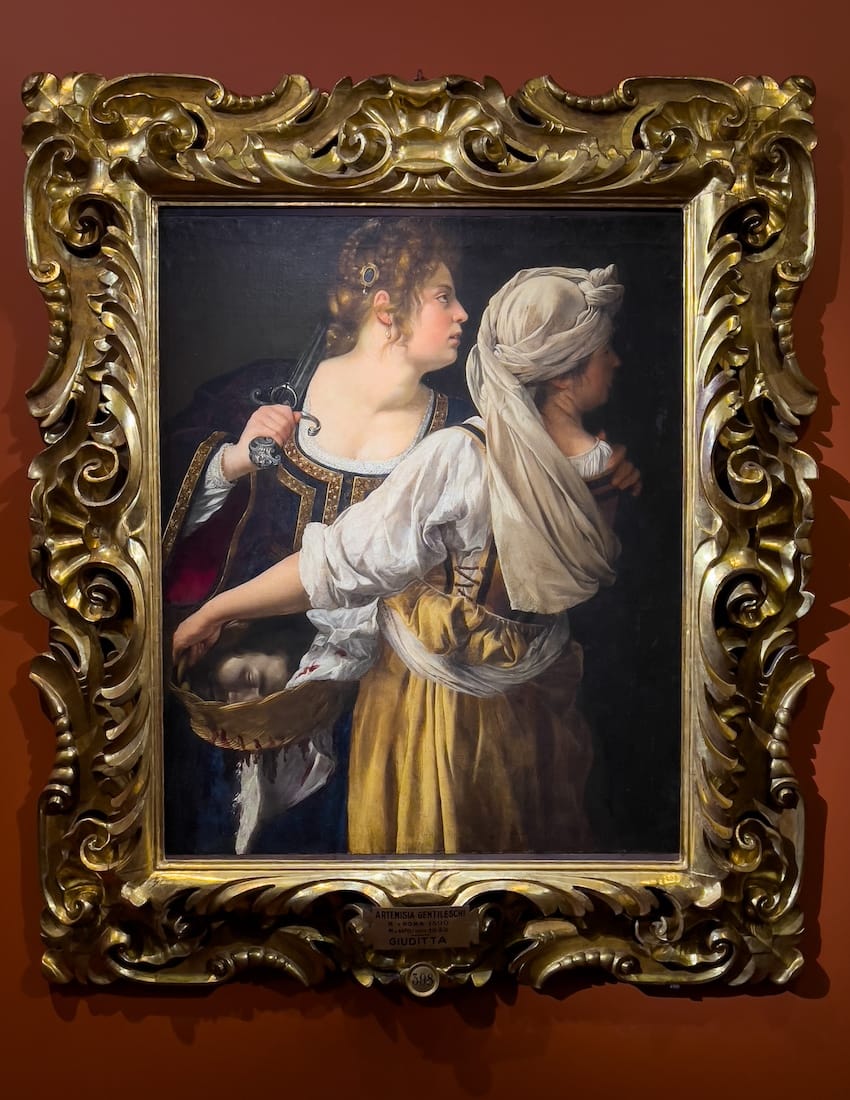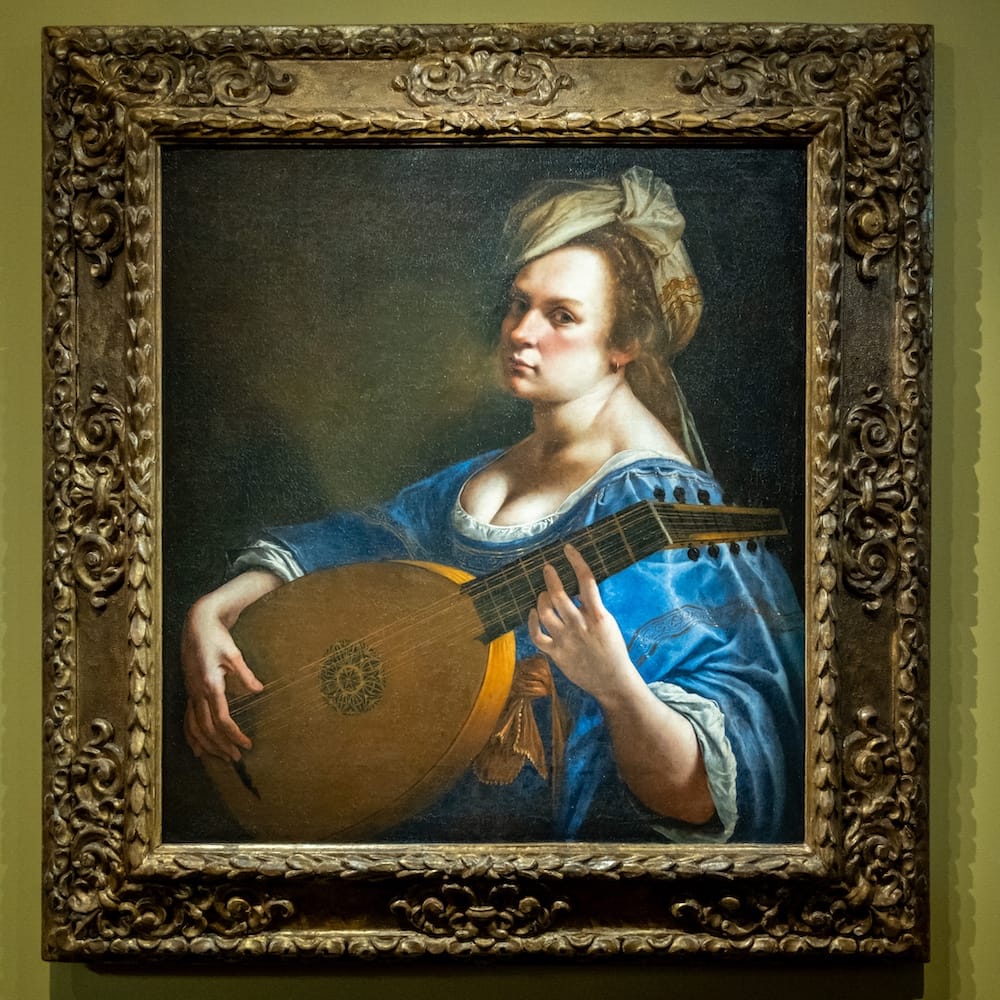I had missed the large Artemisia Gentileschi retrospective at the National Gallery in London in 2020 because of the pandemic so I rejoiced when I read that the Musée Jacquemart-André in Paris would honour her with a solo exhibition.
Artemisia Gentileschi (1593- circa 1656) was born in Rome, the daughter of the painter Orazio Gentileschi and his wife Prudenzia Montoni. Her father taught her how to draw and paint and before long she overshadowed her father, as can be seen in her first dated painting, “Susanna and the Elders” (1610), which perfectly captures the feelings of Susanna as she is being encroached upon by the two elderly men. Artemisia’s paintings have far greater emotional depth than her father’s, which look static by comparison. Just look at Artemisia’s rendition of “Judith and her Servant” and the way Judith places a hand on her servant’s shoulder.


“Judith and her Servant”, Orazio Gentileschi (left) and Artemisia Gentileschi (right)
In 1613, Artemisia Gentileschi moved to Florence where she would receive her first commissions from Cosimo di Medici II. It was here, too, that she learned to read and write and befriended Galileo, among others. In 1620, she and her husband moved back to Rome, where she would live until 1626. After a brief spell in Venice, having separated from her husband, she settled in Naples, where she commanded her own painting workshop and realized several large canvases. In 1638, she travelled to London to rejoin her father who had been commissioned to paint the ceiling for the Queen’s house in Greenwich. While in London Artemisia received various commissions from the Royal family, including the amazing “Allegory of Painting” (1638), which unfortunately is not included in the exhibition. Following the death of her father, in 1639, she returned to Naples.
Widely recognized during her lifetime, Artemisia Gentileschi disappeared into oblivion during the 18th and 19th century, with most of her works relegated to the archives. It wasn’t until the 1970s that her work was rediscovered. She was turned into a feminist icon, as one of the first female painters, and in recent years a number of paintings have been newly attributed to her. It is only now that Artemisia Gentileschi is recognized for what she is: a superstar who can hold her own next to Caravaggio, Rubens and Ribera. A few years ago the blood spattered “Judith Slaying Holofernes” (1612-1617) from the collection of the Museo di Capodimonte was one of the highlights of the Naples in Paris exhibition at the Louvre.
In my brief biographical sketch I deliberately left out one all important event, which also bears upon the interpretation of her work. In 1611, Artemisia Gentileschi was raped by a friend of her father, the painter Agostino Tassi, whom he had hired to teach his daughter perspective. Her father filed a complaint against Tassi, but during the trial it was Artemisia who was tortured by having thumb-screws applied to both of her hands, as was common at the time to make sure that the victim wasn’t lying. Artemisia didn’t relent and Tassi was convicted, but unfortunately he got off lightly.
It is difficult, if not impossible, not to interpret Artemisia Gentileschi’s work in light of this event. But it would also do her injustice. For judging by her remarkable career she was able to rise above the abuse and the physical violation that she had had to endure.

Artemisia Gentileschi painted several self-portraits, which sometimes show her sensual, as in the wonderful “Self-Portrait as a Lute Player” (1614-15), but always self-assured. I cannot help but recognize Artemisia in some of the biblical and mythological scenes that she painted throughout her life. I wouldn’t be surprised if she surreptitiously incorporated some of her own facial features in these portraits. Just look at “Clio. Muse of History (1632). Artemisia subtly signed the painting by including her own name in the open book to Clio’s side.
“Artemisia. Heroine of Art” is an excellent exhibition, but the Musée Jacquemart-André is a small, albeit wonderful, museum and I so wish I had been able to visit the retrospective at the National Gallery.
Artemisia. Héroine de l’art is at the Musée Jacquemart-André in Paris until 3 August 2025.
Links
Masterpieces from the Galleria Borghese at the Musée Jacquemart-André.